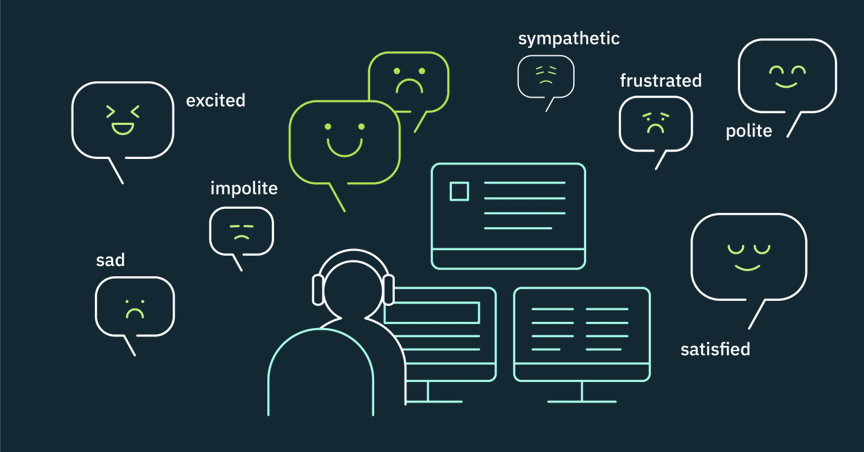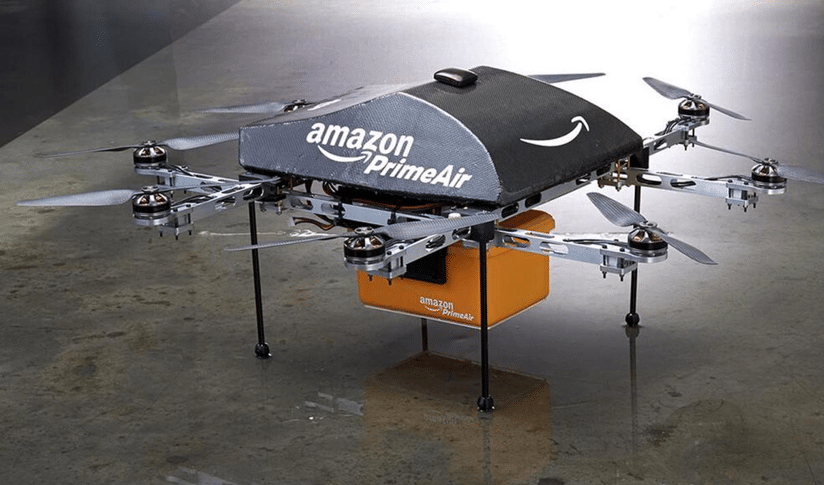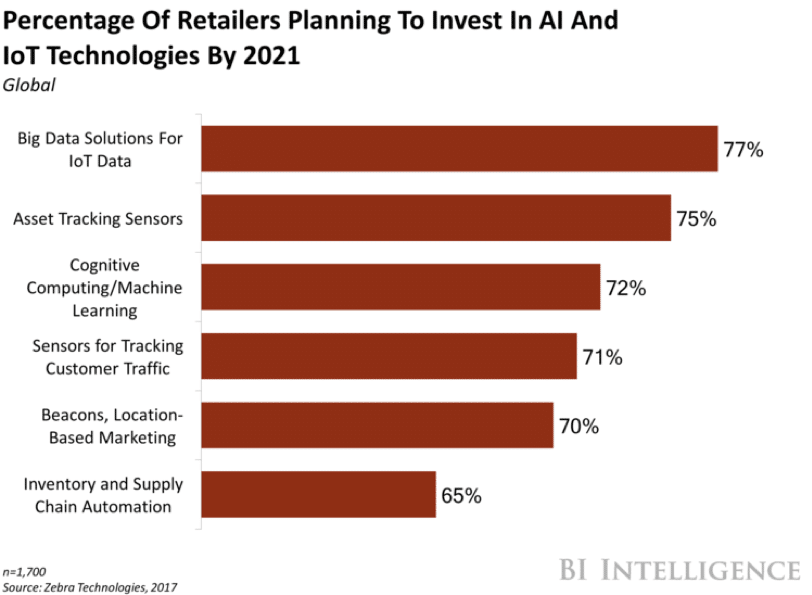Artificial Intelligence (AI) retail applications are expected to increase significantly in the coming years, given its ability to improve many key areas in the retail sector. However, it will likely take much longer for AI applications to reach a level that triggers a “retail revolution” in North America, especially if large players in the AI space continue to remain mute on the topic.
Regardless of the time that it takes for the technology to become mainstream, AI’s effect on the retail sector has the potential to be enormous. Investors can expect far-reaching effects on the value chain of retail stores, ranging from stock-taking and payment to post-sale customer services and more…
Technology research firm Gartner predicts that come 2020, over 30% of CIOs (Chief Information Officers) in the retail industry will place AI among their top 5 investment priorities. This comes as no surprise, as many AI applications so far have been said to improve the bottom line of businesses.
However, there is also a boatload of AI applications that have failed to pan out well, reflecting the gaps and deficiencies that need to be addressed before an AI revolution can take root. As such, most major brands, including Target and Walmart, are treading softly when it comes to new AI initiatives.
That said, many areas of retail are already being transformed by artificial intelligence…
Artificial Intelligence In Today’s Retail Value Chain
- Inventories: There are a handful of AI applications currently being developed to automate the management of inventories. One such application, Simple Robotics Tally, audits and analyzes inventories, alerting store owners to stocks that need to be replenished. It can also detect pricing discrepancies.
Such applications will provide some obvious benefits to retailers, alerting when reorders are needed well ahead of time, to prevent running out of stock. These kinds of applications can also help retailers determine what items sell the most, given their ability to track the duration that products last in inventory.
- Customer relations: A number of AI technologies have already been designed to help boost customer engagement and sales. These applications come with a capacity algorithm that “perceives human emotions” to identify and converse with leads (both online and offline).
Pepper, a humanoid robot developed by a partnership between Japan’s Softbank and French robot maker Aldebaran, is a prime example of such a technology. During a pilot run of the app in California’s B88ta stores, foot traffic increased by 70% and sales increased by 50% percent. In another pilot run—this time in a high-end boutique named The Ave—customer interaction increased by 98%, foot traffic increased by 20%, ultimately leading to a 300% increase in revenue.

- Data analysis: AI companies thrive by providing businesses with analytical tools to improve the decision-making process. In the retail sector, AI companies help businesses mine crucial data by creating “instrumented” environments in stores. These usually consist of sensing technologies such as cameras and other sensors that record buyer’s behavior.
Future AI data analysis applications can help drive sales by using facial recognition to identify a customer’s reactions to products. These apps can deduce and convert data points collected throughout a buyer’s journey into actionable reports, including data obtained from the point of sale, online surveys, etc. AI-generated buyer analytics will likely play a decisive role in the profitability of retail stores in a few years from now.
- Delivery: In December 2016, Amazon’s “Prime Air” made its first-ever drop-off. The air-borne delivery system has been described as the future of goods transportation and delivery. The AI-powered flying delivery machine can deliver up to 5 pounds of goods within 30 minutes. Presently, Amazon is still perfecting the safety and reliability of the machine’s systems and operations. There’s also Amazon’s Scout, a delivery robot on wheels that has been roaming Seattle suburbs, performing deliveries since January.

Another similar AI delivery robot, Domino’s Robotic Unit (DRU), can help keep foods and drinks at appropriate temperatures, and then deliver them using a military-grade navigation mechanism to track its course. Other delivery robots include KiwiBot, which handles deliveries to students in Universities across the US. in a similar manner to Amazon’s Scout.
- Payment: As eCommerce in the U.S. continues to contribute to a greater percentage of retail sales, the area of digital payment security has been one of the most prospective for most AI companies. Leading the way in the adoption of AI-based payment processing is none other than the retail behemoth, Amazon. The company is working on opening it’s brick and mortar stores, dubbed Amazon Go. Through sensors that track customer purchase selections, Amazon Go stores have the potential to eliminate the need for cashiers, registers, queues, and perhaps even security guards.
5G’s Effect On The Retail Industry
The AI revolution is just around the corner—if not already here. For the retail industry, this means improvements in key areas such as inventory management, customer relations, data analysis, product deliveries, payment facilitation, and more.
By offering significantly enhanced wireless capabilities, 5G powered artificial technologies will likely play a pivotal role in the future of the retail sector.



